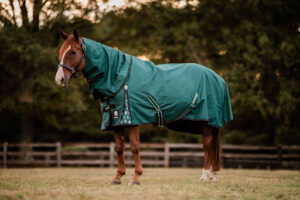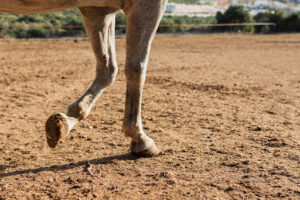Caring for Your Investment: Tips for Maintaining Horse and Rider Gear
Equestrian enthusiasts know that high-quality horseback riding gear represents a significant investment. Whether you’re a casual rider or a competitive equestrian, proper maintenance of your equipment is crucial for safety, performance, and longevity. This comprehensive guide will walk you through everything you need to know about maintaining your valuable horse and rider gear. Cleaning: The […]

Equestrian enthusiasts know that high-quality horseback riding gear represents a significant investment. Whether you’re a casual rider or a competitive equestrian, proper maintenance of your equipment is crucial for safety, performance, and longevity. This comprehensive guide will walk you through everything you need to know about maintaining your valuable horse and rider gear.
Cleaning: The First Line of Defense in Gear Preservation
Regular cleaning is the most fundamental aspect of horseback riding gear maintenance. After each ride, take the time to remove dirt, sweat, and debris from your equipment. Use soft cloths and specialized cleaning products designed specifically for equestrian gear.
When cleaning, pay special attention to areas that accumulate the most dirt and moisture.Bridle straps, saddle creases, and boot interiors are prime spots for dirt and bacteria buildup. Gentle, consistent cleaning prevents long-term damage and keeps your gear looking and performing its best.
Another point worth mentioning when it comes to gear protection is drying. Moisture is the enemy of quality equestrian equipment; hence you need to allow your gear to air dry completely after cleaning. Avoid using direct heat sources like hairdryers, which can cause materials to crack or become brittle. Instead, hang items in a well-ventilated area at room temperature.
Leather Care
Leather gear requires special attention to maintain its suppleness and prevent cracking. Condition your leather items every two to four weeks, depending on the frequency of use. Use high-quality leather conditioners specifically designed for equestrian tack, avoiding household products that might damage the material.
For leather items, use a quality saddle soap that cleans without stripping natural oils. To get that splendid shine, buff small amounts of conditioner into the leather. If you notice dry and cracking areas, neatsfoot oil can help salvage the saddle. But ensure that you use a hoof oil brush and apply it on the flesh split. Avoid using this method on aniline, suede, and nubuck as these leathers are more sensitive to oils, leaving stains or causing them to lose their softness and natural look.
Also, proper storage is critical in maintaining your horse and rider gear. Store equipment in a cool, dry place away from direct sunlight. Invest in quality storage solutions like boot trees for riding boots and helmet stands for protective headgear. These help maintain the shape of your gear and prevent unnecessary wear.
Synthetic Care
Synthetic materials don’t need conditioning like leather does. Cleaning is easy – just focus on getting rid of dirt. Apply a generous amount of synthetic tack soap or mild soap and gently scrub away any grease and grime.
Let the material dry naturally, away from direct sunlight. Before using it again, give it a light buff with a cloth to remove any leftover residue.
While synthetic materials are tougher than leather, it’s still important to avoid scrubbing too hard or getting them too wet, as it could harm the stitching or cause rust on the fittings.
Humidity and Environmental Considerations
The environment where you store your equestrian gear plays a crucial role in its preservation. Maintain humidity levels between 30% and 40% to prevent leather from drying out or developing mold. Consider using a hygrometer to monitor storage conditions, and use dehumidifiers or humidifiers as needed.
To further prevent mold accumulation, ensure that the room has enough ventilation, but good enough that there’s no direct sunlight damaging the gear. Also, prevent the temperature from dropping below 41°F and invest in a quality washing machine for thorough cleaning of your saddle pads, fly veils, boots, and rugs before storing.
Regular inspections are your best defense against potential equipment failures. Before each ride, carefully examine all gear for signs of wear, including:
- Loose stitching
- Cracked leather
- Worn buckles
- Damaged straps
- Rust on metal components
Addressing minor issues immediately can prevent more significant problems that could compromise safety during riding.
Please Note: Rodents and insects can cause significant damage to your equestrian gear. Regularly inspect storage areas and consider using natural pest repellents. Essential oil-based solutions can help deter pests without leaving harmful residues on your equipment.
Final Thoughts
Maintaining your horse and rider gear is an ongoing process that requires dedication and attention to detail. By implementing these strategies, you’ll protect your investment, ensure optimal performance, and enjoy safer, more comfortable rides.
Show your gear some love, and it’ll repay you with lasting performance. Ready to upgrade? Explore our collection of top-quality horse gear online today! We have the best horseback riding gear for women and men alike.







